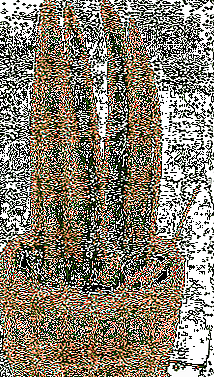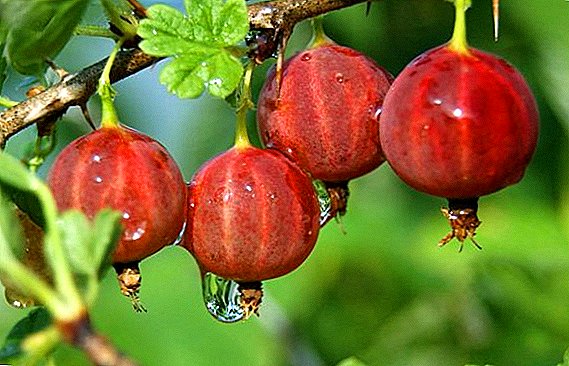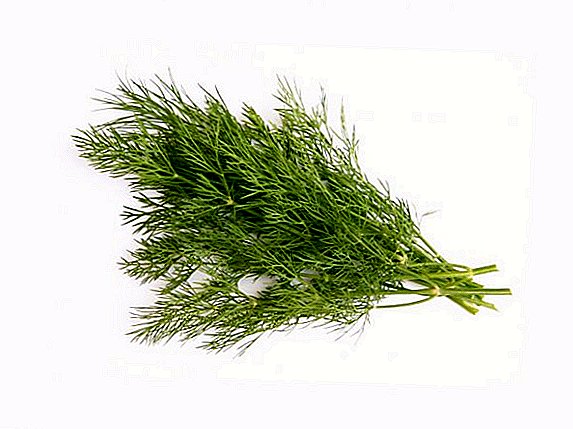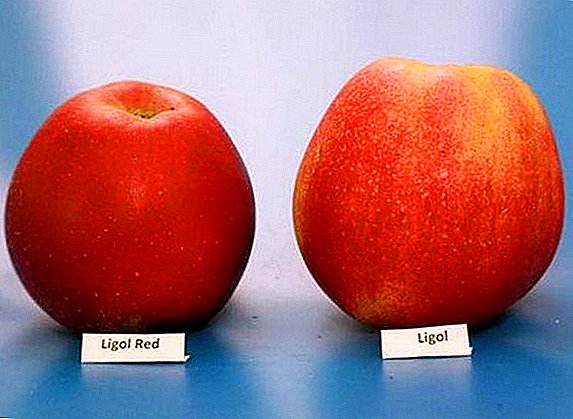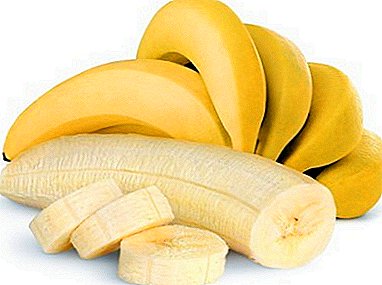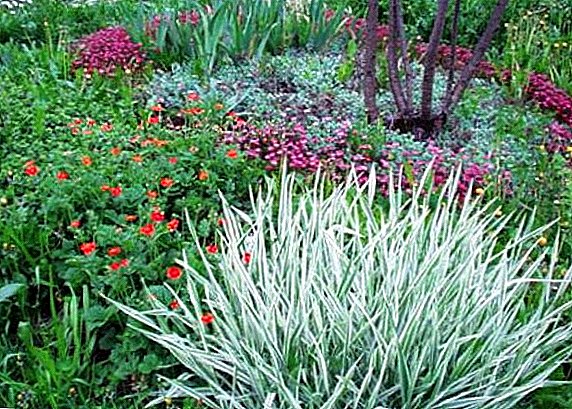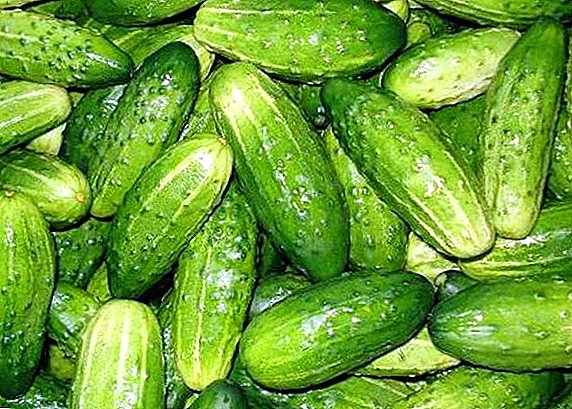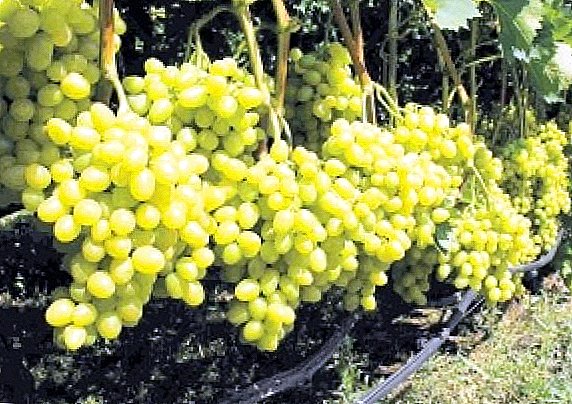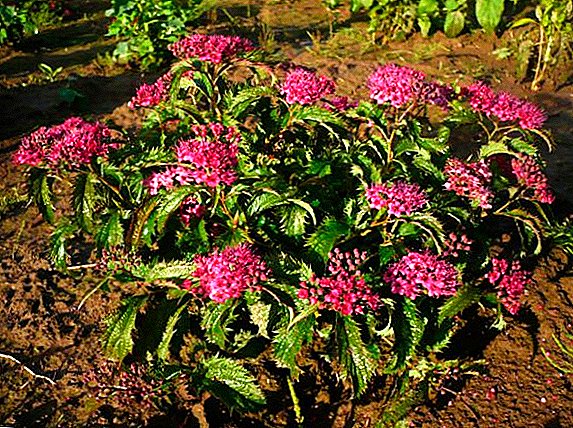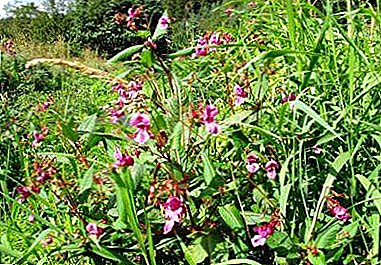
Many modern gardeners liked the wild balsam, striking in their simplicity in maintenance and beautiful bright flowering that delights the eye of the beholder.
Where did this plant come from? What is it about? Where can I plant and how to do it? What diseases can suffer? How does it multiply?
These and other questions will be answered in detail in this article on the wild balsam. In addition, here you will find a photo of this beautiful plant and you can appreciate its appearance.
The history of the wild weed
Due to the high prevalence and diversity of plants, you can’t pinpoint the birthplace of wild balsam. It can occur in almost any part of the world, temperate and tropical areas. But the main points of concentration are still considered to be the countries of Africa, Asia, Europe and North America.
The first information about this plant was obtained in 1689 in India and nearby regions of Asia. After that, other flower growers became interested in the flower. One of them was Karl Linnaeus, to whom many of his associates owe the most complete description and systematization of many species.
The plant gained popularity among gardeners and was loved by many residents of the countries. Today, the flower in Russia is often called Vanka Mokrym.This is due to the fact that when the air humidity increases (rain, fog), small droplets of sweet liquid are formed on the leaves, which later turn into saccharine. In the West, the plant is called Busy Lizzie.
Botanical representation of the plant
 Wild Balsam - belongs to the balsamic family. Translated from the Latin "balsam" means "impatient". The peculiarity of the name is connected with its fruits, the touch to which causes their disclosure.
Wild Balsam - belongs to the balsamic family. Translated from the Latin "balsam" means "impatient". The peculiarity of the name is connected with its fruits, the touch to which causes their disclosure.
The plant is very easy in culture, does not require special care.it is resistant to dry air, it blooms well and grows even on the north side, because feel great without abundant heat. Can grow both in pots and in open ground.
The genus Balsamic (Impatiens) includes from 400 to 550 species of flowering and herbaceous plants.
Description of the species
Its lush foliage and bright flowers adorn not only the fields and forests of our country, but also the most ordinary gardens of people. Despite the fact that Russia is not the birthplace of the flower, the people loved it with all their hearts.
Bloom wild balsam begins in early summer and continues for the next three months. At the end of the last summer month, flowering ends, and fruits appear that look like small boxes (testes). When opening the box, seeds can be scattered within a radius of 2 meters.
In gardens, wild balsam is rarely grown, because breeders brought new well-developed varieties of different beauty and size.
Features
Wild balsam - fairly fragile annual plantreaching a height of 120 centimeters.
- foliage lush, saturated green color;
- rootless roots;
- the stem is knotty, slightly translucent in appearance, especially if the rays of the sun fall on it;
- the leaves are alternately arranged along the stem, oblong elongated;
- flowers of wild (forest) balsam yellow, not having the correct form, slightly pointed at the tip.
Features:
- Only a wild type of balsam has healing properties. Thanks to him, many treat hemorrhoids, ulcers, bouts of rheumatism and many other diseases.
- Grows in the vast wildlife.
- It is found only in yellow.
- The bush is as if translucent, especially under the direct rays of the sun.
- Quite simple, unlike room and garden representatives of the same species.
A photo
Here you can see a photo of wild balsam:




Where and how to plant it?
Usually wild balsam grows in the forest, along the banks of reservoirs. and shady wet terrain like a weed. He is not very much in demand among gardeners, but if your eye still fell on this wonderful flower, then you should take into account such nuances:
- Plant in shaded areas (under trees, bushes, on the west side of the house).
- It is important to observe the distance between plants (at least 30 centimeters) so that the bush can grow and develop normally.
- This should be done in the spring, after the frost leaves (young plants may die at zero temperature).
Plant the plant in several ways.
One way is seeds
- It is necessary to collect seeds from household or forest plants, during the period of fruit ripening.
- Plant the seeds in a small box and sprinkle with a thin layer of earth and water. After that, cover the boxes with a film (this will accelerate the germination of seeds).
- Place the boxes in a warm dark room.
- After the seeds have risen, the box should be moved to a more illuminated place.
- It is important that there is no stagnation of water, therefore, holes must be made at the bottom so that excess moisture leaves.
After 20 days it is necessary to transplant sprouts separately from each other into small containers (for this you can use disposable cups). Seedlings should be fertilized so that they grow strong and did not die in the first days of the transplant.
You should also harden the seedlings, bringing them into the street during daylight. In the evening, the boxes should be removed back to their usual place.
Plants can be planted if on the shoots appeared about 10 leaves. Before planting, you need to make a shallow hole (7-10 cm) and fill it with water. Plant should be so that the earth touched the first leaf of the plant.
Planting bushes

- It is necessary to find young plants in the forest, about 10-15 cm in height. It is important to do everything carefully, without damaging the roots.
- Dig a hole 15-20 cm deep and pour water abundantly.
- Carefully plant the bushes, covered with earth on top to keep the moisture longer.
To increase the likelihood that the flower will take, you can bring the land from the place where this plant grew before, and mix with you the land where you want to plant. This is necessary in order to avoid abrupt changes in the quality of the soil, in which the bush grows before and after transplantation. Due to this condition, the plant will take root faster and begin to bloom better.
Wild balsam is very poisonous, especially during flowering. If you do decide to plant it near the house or in the garden, it is worth considering all the precautions, especially if you have children.
Location and lighting
As mentioned earlier, wild balsam should be planted in the shade.
Direct sunlight is bad for this plant. The leaves are covered with yellow spots (get burned) and dry.
The soil should always be wet.
Soil requirement and care
This flower is not picky about the composition of the soil. The main thing to consider is that the soil should not be sour and loose. To do this, you can mix:
- sand;
- compost;
- humus;
- leaf ground.
On hot days you need to water every night. You need to pour water so that the soil is soaked at a depth of 40 cm.
Can be fertilized. If you want thicker leaves, then you should choose a fertilizer with a high content of nitrogen, abundant flowering - phosphate-nitrogen fertilizers.
Common diseases and pests
In the open territory, any flower is exposed to various pests and diseases, but what to do if it caught up with our balsam?
First you need to understand what happened to him. So, if you find that the flower buds fall off. The most common causes may be:
 The presence of plant pests, such as ticks, aphids, whiteflies, thrips, etc.
The presence of plant pests, such as ticks, aphids, whiteflies, thrips, etc.- The plant can react badly to excess moisture. Although the flower loves frequent watering, you should not neglect this procedure.
- Wrong selection of soil. Remember that the soil should not be stony so that the roots can breathe and develop.
In the fight against pests can help a variety of tools that are available in a large assortment.
Among the diseases, the greatest damage to the plant, located outside the room, is caused by downy powdery grass. The development of the disease contributes to:
- Wet cool weather.
- Close proximity of flowers with each other. Moisture does not have time to evaporate, creating discomfort.
- Careless attitude.
First, a white bloom appears on the inside of the sheet, after which the sheet turns black and falls. New foliage thins, or stops its growth altogether.
At the first signs of illness, remove all infected balsams., and to subject to treatment precisely those that the disease has not had time to catch.
Pest insects can also be frequent guests of the wild balsam:
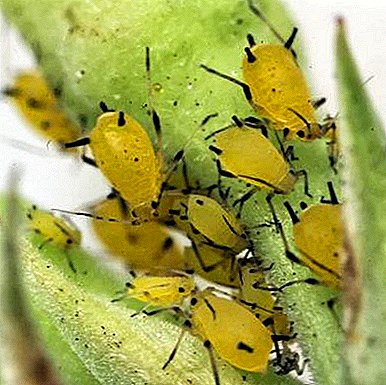 Aphid - sucks all the juice from the leaves of balsam, why they are deformed and stop growing.
Aphid - sucks all the juice from the leaves of balsam, why they are deformed and stop growing.Due to the plentiful defeat of the aphids, the plant may die. You can get rid of tinctures of tobacco, onion peel, wormwood, dandelions.
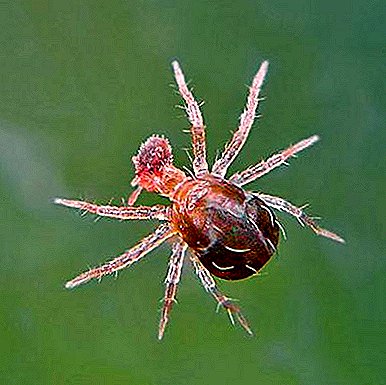 Spider mite - spreads rapidly along the flower, which is why it is very difficult to breed. Appears on the back of the leaf, sucking the juice out of it and multiplying. It's difficult to notice it, so beware of the appearance of the web, these are signs that the tick has spread and the disease is in an advanced form. In this situation, only chemical preparations will help, which should be changed every 4-5 days, as the mite quickly becomes accustomed to them and soon may not respond to spraying.
Spider mite - spreads rapidly along the flower, which is why it is very difficult to breed. Appears on the back of the leaf, sucking the juice out of it and multiplying. It's difficult to notice it, so beware of the appearance of the web, these are signs that the tick has spread and the disease is in an advanced form. In this situation, only chemical preparations will help, which should be changed every 4-5 days, as the mite quickly becomes accustomed to them and soon may not respond to spraying.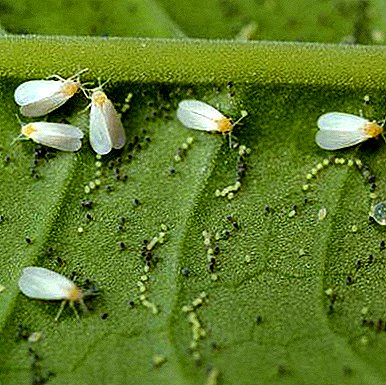 White fly - lays on the inside of the larvae, which soon hatch and begin to suck the life force out of the plant. The fight against this type of pest is not quite easy, because with time the skin of the larvae hardens, and they become almost invulnerable to insecticides. Eggs and larvae can be washed off with water, while at the same time trying to get the jet fell on the sheet from two sides.
White fly - lays on the inside of the larvae, which soon hatch and begin to suck the life force out of the plant. The fight against this type of pest is not quite easy, because with time the skin of the larvae hardens, and they become almost invulnerable to insecticides. Eggs and larvae can be washed off with water, while at the same time trying to get the jet fell on the sheet from two sides.
Many growers, in order to avoid parasites and for prophylaxis, are advised to spray the plants with various insecticides or infusion of crushed garlic.
Caution! Processing plants is best done in a special dressing, to avoid the ingress of chemicals in the respiratory tract.
Breeding
 Most often wild balsam propagated by cuttings. This method allows you to save all the signs of the maternal "individual".
Most often wild balsam propagated by cuttings. This method allows you to save all the signs of the maternal "individual".
- Planting material is cut during transplantation.
- Choose branches without buds, each of which must have at least two internodes.
- The bottom leaves are cut off.
Rooting methods:
- Water. Immerse the branch in the water without touching the foliage, because rotting may begin. Put in a well-lit place with warm air. The roots will appear almost immediately, after 2 weeks it will be possible to change the layering to the ground.
- Priming. Grounding cutting is shallow. The soil for such a procedure can be prepared by yourself: peat and vermiculite mixed in equal parts, 2 parts of perlite. The substrate should always be slightly moistened and, after watering, slightly loosened to saturate with oxygen.
If you chose a wild balsam, then be exactly sure that it will not bring you any special trouble, delighting with its brightness and beauty throughout the flowering.


 The presence of plant pests, such as ticks, aphids, whiteflies, thrips, etc.
The presence of plant pests, such as ticks, aphids, whiteflies, thrips, etc. Aphid - sucks all the juice from the leaves of balsam, why they are deformed and stop growing.
Aphid - sucks all the juice from the leaves of balsam, why they are deformed and stop growing. Spider mite - spreads rapidly along the flower, which is why it is very difficult to breed. Appears on the back of the leaf, sucking the juice out of it and multiplying. It's difficult to notice it, so beware of the appearance of the web, these are signs that the tick has spread and the disease is in an advanced form. In this situation, only chemical preparations will help, which should be changed every 4-5 days, as the mite quickly becomes accustomed to them and soon may not respond to spraying.
Spider mite - spreads rapidly along the flower, which is why it is very difficult to breed. Appears on the back of the leaf, sucking the juice out of it and multiplying. It's difficult to notice it, so beware of the appearance of the web, these are signs that the tick has spread and the disease is in an advanced form. In this situation, only chemical preparations will help, which should be changed every 4-5 days, as the mite quickly becomes accustomed to them and soon may not respond to spraying. White fly - lays on the inside of the larvae, which soon hatch and begin to suck the life force out of the plant. The fight against this type of pest is not quite easy, because with time the skin of the larvae hardens, and they become almost invulnerable to insecticides. Eggs and larvae can be washed off with water, while at the same time trying to get the jet fell on the sheet from two sides.
White fly - lays on the inside of the larvae, which soon hatch and begin to suck the life force out of the plant. The fight against this type of pest is not quite easy, because with time the skin of the larvae hardens, and they become almost invulnerable to insecticides. Eggs and larvae can be washed off with water, while at the same time trying to get the jet fell on the sheet from two sides.